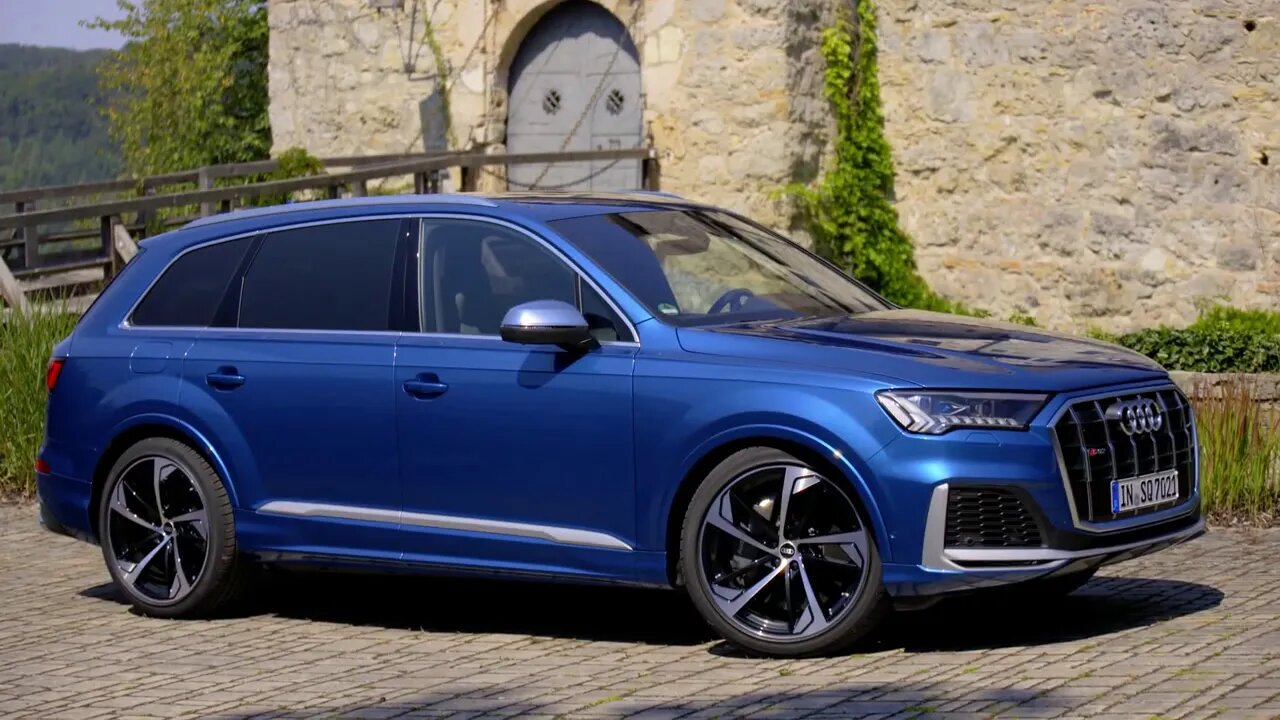Premium Only Content

507 HP Audi SQ7 FACELIFT V8 BiTurbo in detail 20 min
4.0-liter twin-turbo V8 with 373 kW (507 PS) and 770 Nm (567.9 lb-ft) of torque
Suspension comes with all-wheel steering and sport air suspension as standard,
and with a sport differential and roll stabilization as an option
The cylinders must be well filled when the driver accesses the full performance of the 4.0 TFSI.
For this purpose, the intake and exhaust camshafts can be adjusted by a crank angle of
50 degrees, depending on the operating conditions. This precisely controlled valve overlap
ensures that the gas exchange and combustion chamber filling are always adjusted at lightning
speed.
The two twin-scroll turbochargers, each of which supplies one cylinder bank with up to 1.5 bar of
pressure (relative), also enable a gas exchange with virtually no loss. This results in harmonious
power delivery and spontaneous response time. The cylinder heads are designed with the intake
side on the outside and the exhaust side on the inside, while the turbochargers and their
intercooler are fitted in the 90-degree inner V. This layout enables short gas paths between the
outlet duct and the drive side of the exhaust turbine with minimal flow loss.
Its 1-3-7-2-6-5-4-8 ignition sequence gives the 4.0 TFSI a distinct sporty and sonorous sound.
There is a flap in each tailpipe of the exhaust system that modulates the sound depending on
the load and engine speed. Active engine mounts reduce the transmission of vibrations to the
body. Their electromagnetic actuators act as loudspeakers: They emit impulses via the
membranes that correspond exactly to the engine’s vibrations but are phase-shifted by
180 degrees. According to the law of interference, the two waves largely cancel each other out.
A quickly shifting eight-speed tiptronic and the quattro permanent all-wheel drive put the power
of the 4.0 TFSI onto the road. A clutch in the automatic transmission engages freewheeling
when the driver takes their foot off the accelerator. In regular driving operation, the purely
mechanical center differential distributes the drive torque to the front axle and rear axle at a
ratio of 40:60. If traction decreases at one axle, it directs most of the torque to the other axle –
up to 70% to the front or up to 85% to the rear axle.
With the optional advanced suspension package, customers receive the sport differential in
addition. When cornering at high speed, it shifts the torque between the rear wheels via two
multi-plate clutches, with most of the torque being transferred to the wheel with better grip at
the outside of the curve. This torque vectoring makes handling even more agile and stable:
When turning in or accelerating, the large sports SUV is literally pressed into the curve and
understeer is heavily minimized.
Audi SQ7 FACELIFT in detail 20 min
-
 LIVE
LIVE
Dr Disrespect
5 hours ago🔴LIVE - DR DISRESPECT - WHAT HAPPENED TO WARZONE?
24,154 watching -
 47:03
47:03
Kimberly Guilfoyle
2 hours agoThe FBI is now Kash Only, Live with Larry Elder & Steve Friend | Ep. 178
7.49K4 -
 LIVE
LIVE
Redacted News
2 hours ago"BREAKING! Trump Declares WAR on Deep State Biden Corruption, Hunter Biden Pardon Exposed "
15,155 watching -
 51:33
51:33
Candace Show Podcast
3 hours agoHunter Biden Didn’t Do ‘Nuffin | Candace Ep 112
20.7K35 -
 LIVE
LIVE
LFA TV
21 hours agoJOE PARDONS HUNTER TO SAVE HIMSELF?! | UNGOVERNED 12.2.24 5pm EST
598 watching -
 LIVE
LIVE
JackknifeFinnegan
3 hours agoWELCOME TO RUMBLE, WELCOME TO FREEDOM
362 watching -
 LIVE
LIVE
Yefune Kenizi's [PC] Gaming
2 hours ago $1.73 earnedGTAO - Diamond Casion Heist Week: Monday w/ GamingChad
352 watching -
 1:57:20
1:57:20
The Quartering
4 hours agoJoe Biden's Insane Pardon Of Hunter & Trumps Response, Dr Disrespect Joins Rumble, Kash To FBI!
65.5K42 -
 11:04
11:04
Silver Dragons
2 hours agoCan This Silver Prediction Come True? Biggest Bank on Silver Price in 2025
9.49K1 -
 LIVE
LIVE
ttvglamourx
3 hours ago $5.64 earnedCALL OF DUTY SEARCH AND DESTROY !DISCORD
374 watching